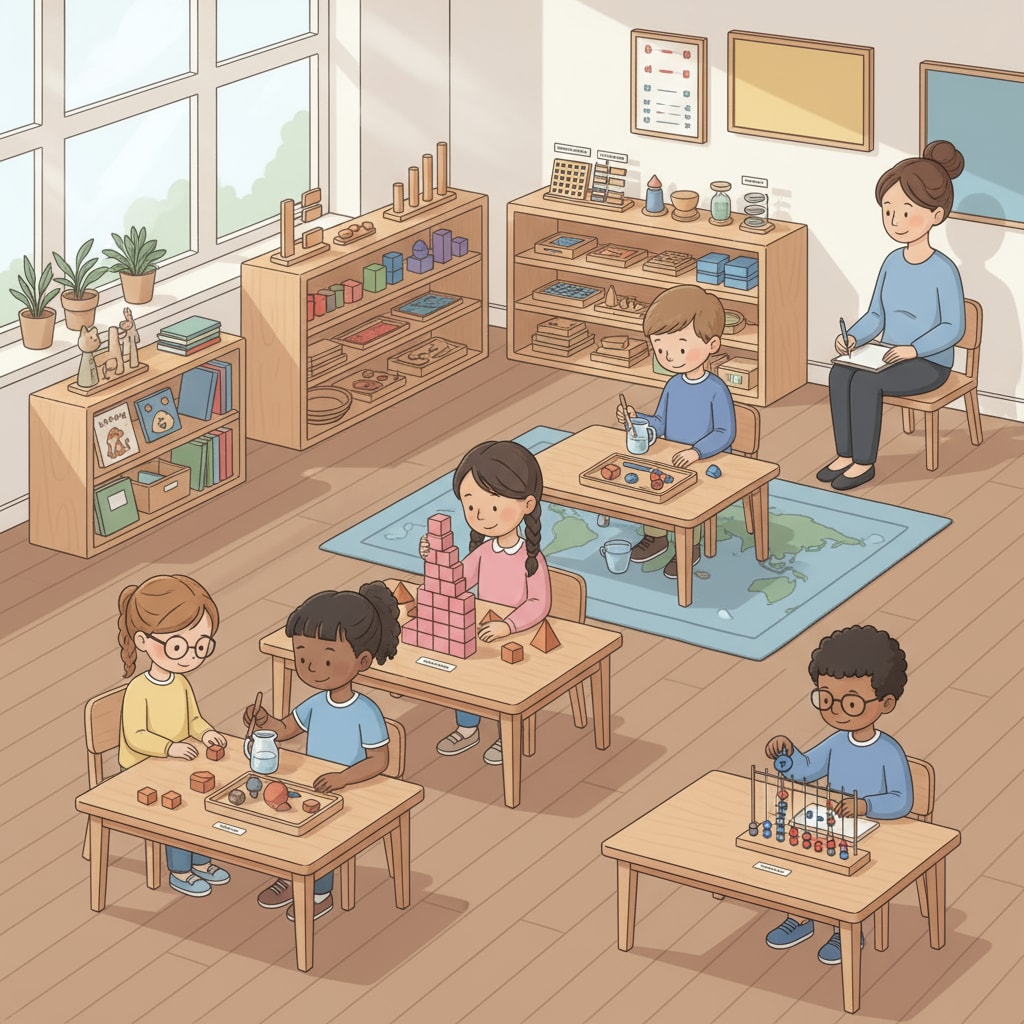Highly gifted and twice-exceptional (2e) children often encounter unique challenges when making the transition from a Montessori environment to a traditional public school’s gifted program. This shift involves moving from one educational philosophy to another, which can be both exciting and overwhelming for these young learners.

As parents, understanding these challenges and implementing appropriate strategies can significantly ease the transition process and help children thrive in their new educational setting.
The Montessori Experience: A Foundation for Gifted 2e Children
The Montessori approach is renowned for its individualized learning, hands-on experiences, and focus on self-directed exploration. In a Montessori classroom, children are given the freedom to choose their activities and work at their own pace. This environment nurtures independence, creativity, and a love for learning in highly gifted and 2e children. For example, a child interested in science may spend hours conducting experiments with Montessori materials, fostering a deep understanding of scientific concepts. According to Montessori education on Wikipedia, this method emphasizes the development of the whole child, including physical, emotional, and cognitive aspects.

The Challenges of Transitioning to Public School
When moving to a public school, highly gifted and 2e children may face several adjustments. The structured curriculum and larger class sizes in public schools can be a stark contrast to the Montessori environment. Additionally, the teaching methods may be more traditional, relying on lectures and textbooks rather than hands-on exploration. This change can make it difficult for these children to maintain their engagement and motivation. Moreover, the social dynamics in a new school can be challenging, as they may need to build new friendships and adapt to a different peer culture.
Readability guidance: As seen above, we break down complex ideas into short paragraphs. Each H2 section has a clear focus, and we use examples and external references to support the content. Transition words like “additionally” and “moreover” are used to connect ideas smoothly.
Strategies to Support the Transition
- Communicate with the school: Before the transition, have an open conversation with the public school about your child’s unique needs, strengths, and learning style. Provide information about their Montessori experience to help teachers understand how to best support them.
- Prepare your child: Talk to your child about the changes they can expect in the new school. Visit the school in advance, meet the teachers, and explore the facilities. This can help reduce anxiety and make the transition feel more familiar.
- Advocate for accommodations: If your child has special needs due to their twice-exceptional nature, advocate for appropriate accommodations in the public school. This may include additional support for learning disabilities or advanced curriculum for their giftedness.
By implementing these strategies, parents can help highly gifted and twice-exceptional children successfully navigate the transition from Montessori to public school. This will enable them to continue growing and learning in their new educational environment, as described on Understood.org, a resource for children with learning and attention issues.
In conclusion, the transition from Montessori to public school for highly gifted and twice-exceptional children is a significant milestone. With proper planning, communication, and support, children can not only adapt to the new environment but also thrive and reach their full potential. It’s essential for parents to be proactive in ensuring a smooth transition and providing the necessary resources for their children’s success.


